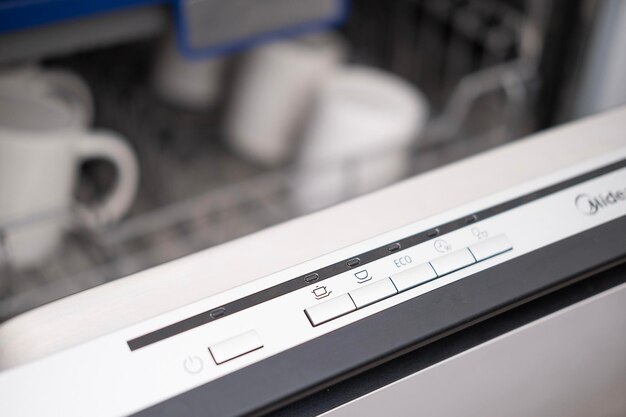
Comprehensive Guide to Dishwasher Error Codes: Troubleshooting Tips & Solutions
Updated on October 17, 2023 by Home Appliance Expert
Dishwashers are an essential part of modern kitchens, providing the convenience of automatically cleaning our dishes. However, they can sometimes encounter issues, and error codes are a common way to diagnose problems. In this comprehensive guide, we will explore various dishwasher error codes, their meanings, and provide troubleshooting tips and solutions to help you get your appliance back in working order.
- Understanding Dishwasher Error Codes
- Common Dishwasher Error Codes
- Tips for Preventing Errors
- Conclusion
Understanding Dishwasher Error Codes
Dishwasher error codes are alphanumeric signals that indicate specific malfunctions within the machine. Each brand and model may have its own unique set of error codes, which often appear on the display panel, allowing users to identify issues quickly. Understanding these codes can save you time and money by allowing you to troubleshoot problems before calling a technician. Here are some key points to consider when interpreting dishwasher error codes:
Factors Influencing Error Codes
- Model and Brand: Different models have different error codes; consult your user manual.
- Usage Patterns: Frequent use can lead to wear and tear, influencing error frequency.
- Maintenance History: Regular maintenance can prevent common error codes.
Common Dishwasher Error Codes
Here are some of the most common dishwasher error codes, along with their meanings and potential solutions:
- Error Code E1: This generally indicates an issue with water supply, such as a clogged or kinked hose. Check your water connection, ensure that the valve is open, and inspect the hose for any obstructions.
- Error Code E2: Often related to drainage problems. Make sure the drain hose is properly positioned and clear of debris. You may also need to clean the filter at the bottom of the dishwasher.
- Error Code E3: This error code typically signifies a heating issue. Check the heating element and thermostat to see if they require replacement.
 Tips for Preventing Errors
Tips for Preventing Errors
Preventing errors from occurring in your dishwasher can save you time and frustration. Below are several tips that can help maintain your dishwasher’s performance:
- Regular Maintenance: Clean filters regularly and check hoses for signs of wear.
- Proper Loading: Avoid overloading your dishwasher as this can obstruct water flow.
- Use Quality Detergents: Incompatible or low-quality detergents may cause buildup and errors.
“A well-maintained dishwasher is a reliable dishwasher.”
Frequently Asked Questions
What should I do if my dishwasher shows an error code?
First, refer to your user manual to identify the error code. Follow troubleshooting steps for that specific code, and if issues persist, consider contacting a professional for repair.
Are all dishwasher error codes universal?
No, different brands and models may have distinct error codes. Always consult your appliance’s manual for accurate information.
Conclusion
Understanding the various error codes displayed by your dishwasher can significantly enhance your ability to troubleshoot and resolve issues on your own. By being proactive and maintaining your appliance, you can reduce the likelihood of encountering errors and prolong the life of your dishwasher. For more information on maintaining home appliances and troubleshooting, check out our related articles.
Related Posts
If you need further assistance with appliance issues, don’t hesitate to contact our experts!